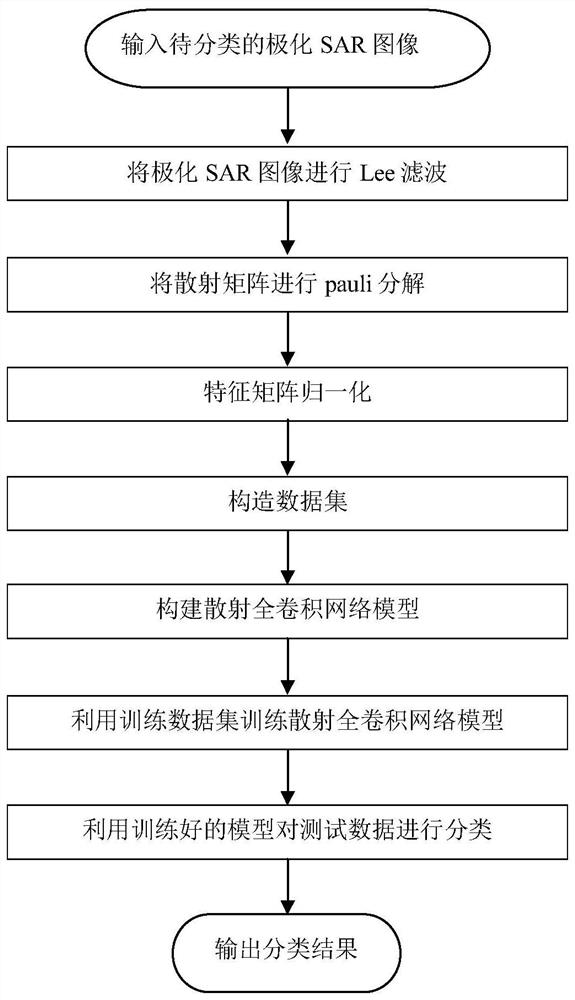Polarized SAR Classification Method Based on Scattering Fully Convolutional Model
A convolution model and classification method technology, applied in the field of image processing, can solve problems such as low classification accuracy, incomplete scattering feature information, poor classification effect of image edge pixels, etc., to improve classification accuracy, improve training speed, The effect of speeding up training
- Summary
- Abstract
- Description
- Claims
- Application Information
AI Technical Summary
Problems solved by technology
Method used
Image
Examples
Embodiment Construction
[0029] Attached below figure 1 The steps of the present invention are further described in detail.
[0030] Step 1. Perform Lee filtering on the polarimetric SAR image to be classified.
[0031] The scattering matrix of the polarimetric SAR image to be classified is subjected to refined polarization Lee filtering to filter coherent noise, and the filtered scattering matrix is obtained. The size of the polarimetric SAR image to be classified is 1800×1380 pixels, and the filtered scattering matrix is obtained. Each element in the matrix is a 3×3 matrix, which is equivalent to a 9-dimensional feature for each pixel.
[0032] The window size of the Lee filter in the refined polarized Lee filter is 7×7 pixels.
[0033] Step 2. Perform Pauli decomposition of the scattering matrix.
[0034] The filtered scattering matrix is decomposed by Pauli to obtain odd scattering energy, even scattering energy and volume scattering energy, and use the decomposition obtained odd scatte...
PUM
 Login to View More
Login to View More Abstract
Description
Claims
Application Information
 Login to View More
Login to View More - R&D
- Intellectual Property
- Life Sciences
- Materials
- Tech Scout
- Unparalleled Data Quality
- Higher Quality Content
- 60% Fewer Hallucinations
Browse by: Latest US Patents, China's latest patents, Technical Efficacy Thesaurus, Application Domain, Technology Topic, Popular Technical Reports.
© 2025 PatSnap. All rights reserved.Legal|Privacy policy|Modern Slavery Act Transparency Statement|Sitemap|About US| Contact US: help@patsnap.com



